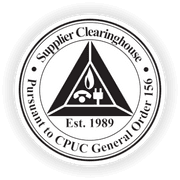The conversation surrounding DEI in the workplace often centers on setting initiatives for the workplace with the assumption that employees will be able to simply adapt to the new processes without any difficulty. But the reality of creating inclusion at work requires a deep understanding of what’s going on in your pipeline development – from hiring to promoting employees – and a willingness to make significant changes to both policy and behavior. That’s because DEI is so much more than recruiting a diverse workforce: it’s about creating an inclusive workplace, for employees of all backgrounds, and providing equitable opportunities for all employees. This likely means changing the culture of your organization so that best practices for DEI become the “new normal.”
Change management in DEI is all about identifying what needs to be changed, and then developing new processes and implementing strategies to ensure the new processes are followed. This may also mean employees need to demonstrate new, more inclusive, behaviors in conjunction with the new processes. For example, if you created a new performance evaluation process, you will need to ensure managers are clear on the process and that they have the necessary inclusive skillsets to share constructive feedback with employees.
Of course, when you first implement any change, there will be a period of disruption since you haven’t yet integrated these new processes and habits. Though working toward your new goal will feel unfamiliar in the beginning and may take up extra energy, practice will soon make the desired behavior the new default.
Organizations go through the same disruption in the change management process when implementing new inclusive recruitment initiatives. Changing how you recruit employees, for example, can often be challenging for organizations. After all, if you’ve had managers that have been using the same interviewing methods for decades, they’ll naturally fall back on using the same old practices they’re used to.
That’s why it’s essential to prepare leaders with a standardized strategy for changing the recruitment process, such as guidelines for asking the same questions to all candidates, giving candidates exposure to other leaders, and slowing down the decision-making in order to become conscious of biases. But the change doesn’t stop there – once employees have been hired, there will also need to be a process to bring them into the group and assimilate them into organizational culture so that they don’t miss out on mentorship and promotion opportunities down the line.
When you’re implementing change management, you’ll want to get everyone in your organization on board through transparent communication. You’ll want to explain the reasons for the change, the expected outcomes, and the steps that will be taken to achieve them so that employees clearly understand the new DEI initiatives. Employees can also be engaged in the process through collecting feedback and integrating their feedback in your initiatives.
The final step in the change management process is tracking your progress towards your desired goals. This can be done through metrics such as employee diversity, retention rates, and promotion rates. Orange Grove Consulting integrates change management theory and strategy for organizations beginning with our assessments, which gives you targeted recommendations for improvement. Once you’ve got an objective understanding of what you want to prioritize, we have a range of solutions to help you build an inclusive culture, including strategy, training, and implementation.
Since change is an inevitable part of business, finding the best ways to adapt will set your organization up for long-term success.
Contact Us




